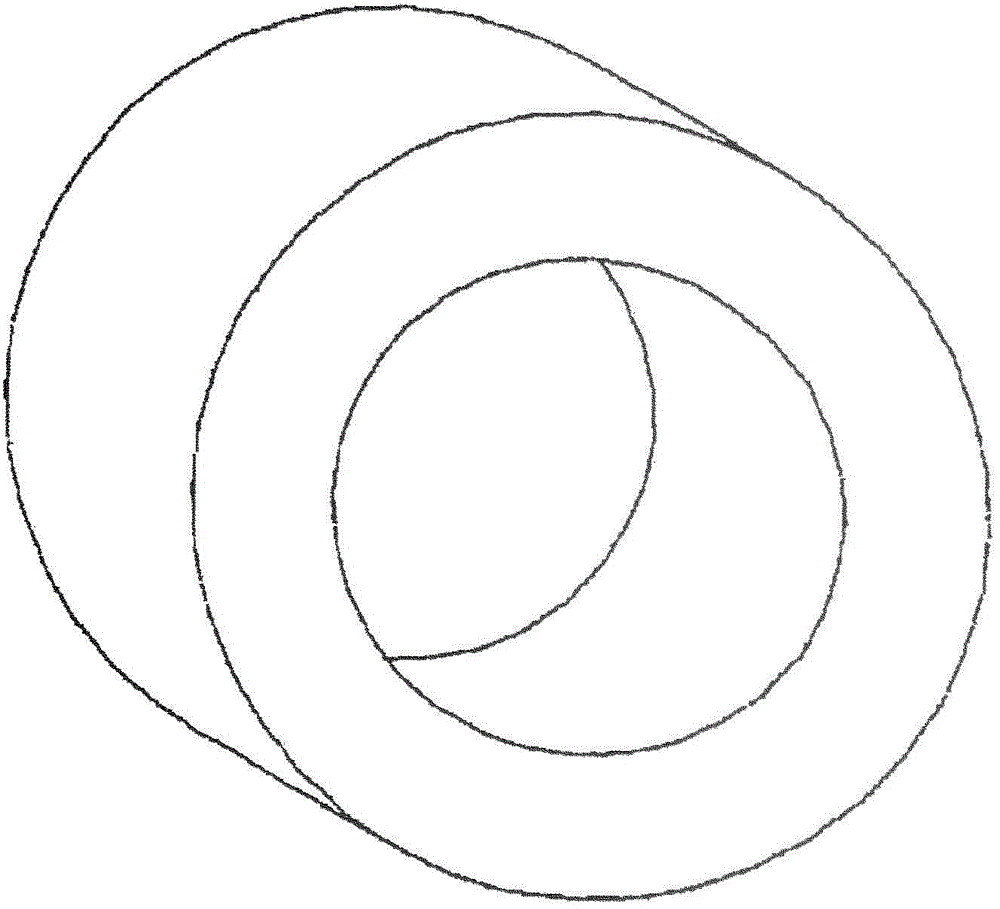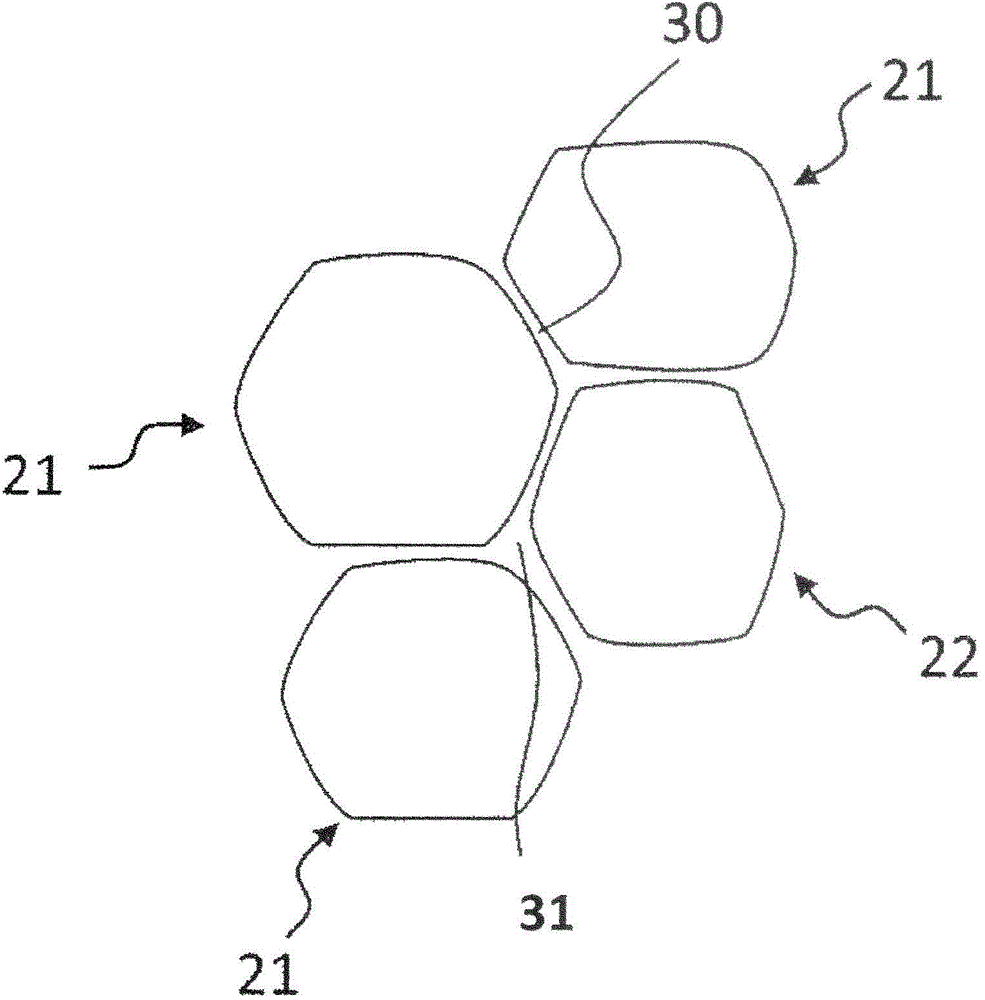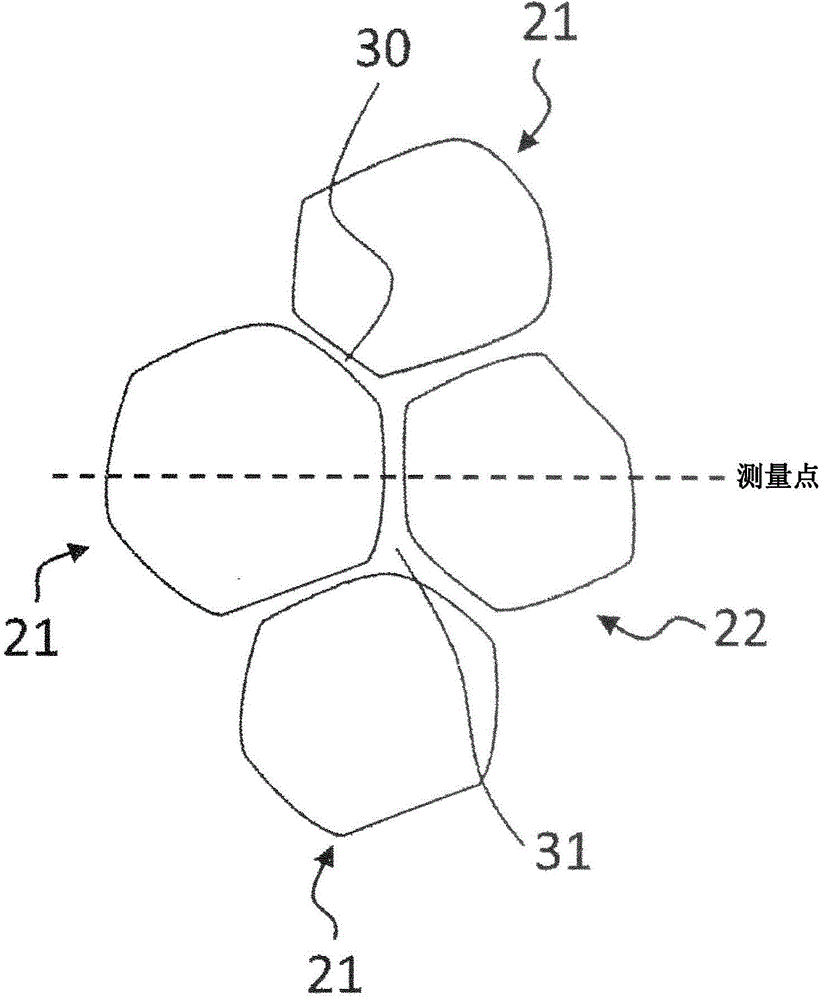Soft magnetic body composition, manufacturing method thereof, magnetic core, and coil-type electronic component
A manufacturing method and technology of soft magnetic alloy, applied in the direction of magnetic objects, transformer/inductor parts, magnetic materials, etc., can solve the problem of lack of strength of molded products, and achieve the effect of reducing the deterioration of the mold and improving the productivity
- Summary
- Abstract
- Description
- Claims
- Application Information
AI Technical Summary
Problems solved by technology
Method used
Image
Examples
Embodiment 1)
[0097] About Sample 1
[0098] [Preparation of soft magnetic alloy powder]
[0099] First, ingots, bulks (blocks) or pellets (granules) of Fe simple substance, Cr simple substance, and Si simple substance are prepared. Next, these were mixed so as to have a composition of 88.5% by mass of Fe, 5% by mass of Cr, and 6.5% by mass of Si, and were accommodated in a crucible placed in a water atomization device. Next, in an inert atmosphere, using a working coil installed outside the crucible, the crucible is heated to above 1600°C by high-frequency induction, and the ingots, chunks or pellets in the crucible are melted and mixed to obtain a melt.
[0100] Next, the melt in the crucible is ejected from the nozzle installed in the crucible, and at the same time, the ejected melt is rapidly cooled by colliding with a high-pressure (50 MPa) water flow, and the Fe-Si-Cr-based particles are produced. Soft magnetic alloy powder (average particle size: 50μm).
[0101] As a result of a...
Embodiment 2)
[0123] Regarding samples 3 and 4
[0124] Sample 3 produced powder magnetic powder in the same manner as sample 1, except that soft magnetic alloy powder composed of 85% by mass of Fe, 5.5% by mass of Al, and 9.5% by mass of Si was used as the soft magnetic alloy powder. Core samples were subjected to the same evaluation. The results are shown in Table 1.
[0125] In addition, in Sample 4, in addition to using a soft magnetic alloy powder composed of 85% by mass Fe, 5.5% by mass Al, and 9.5% by mass Si as the soft magnetic alloy powder, a non-silicone-based resin (Nagase Kasei Co., Ltd. (manufactured by Co., Ltd.: DENATITE XNR4338) was used as a binder resin, and a powder magnetic core sample was prepared in the same manner as in Sample 3, and the same evaluation was performed. The results are shown in Table 1.
[0126] As shown in Table 1, it was confirmed that in sample 3, a layer containing Si was formed at the grain boundary. However, it was confirmed that sample 3 c...
Embodiment 3)
[0129] About samples 5 to 14
[0130] For samples 5 to 14, except that the composition of the soft magnetic alloy particles was changed so as to have the composition shown in Table 2, powder magnetic core samples were prepared in the same manner as sample 1, and the same evaluation was performed. The results are shown in Table 2.
[0131] [Table 2]
[0132]
[0133] As shown in Table 2, it was confirmed that when the soft magnetic alloy particles satisfy the specified composition specified in the present invention, powder magnetic cores having sufficient strength and excellent magnetic properties can be obtained (samples 6 to 9, 12 and 13).
[0134] On the other hand, it was confirmed that in the case where the soft magnetic alloy particles do not satisfy the prescribed composition specified in the present invention, at least one of the strength and magnetic properties of the obtained powder magnetic core deteriorates (test samples 5, 10, 11 and 14).
PUM
| Property | Measurement | Unit |
|---|---|---|
| thickness | aaaaa | aaaaa |
| particle diameter | aaaaa | aaaaa |
| particle size | aaaaa | aaaaa |
Abstract
Description
Claims
Application Information
 Login to View More
Login to View More - R&D
- Intellectual Property
- Life Sciences
- Materials
- Tech Scout
- Unparalleled Data Quality
- Higher Quality Content
- 60% Fewer Hallucinations
Browse by: Latest US Patents, China's latest patents, Technical Efficacy Thesaurus, Application Domain, Technology Topic, Popular Technical Reports.
© 2025 PatSnap. All rights reserved.Legal|Privacy policy|Modern Slavery Act Transparency Statement|Sitemap|About US| Contact US: help@patsnap.com



